Reticular Formation and Limbic System
1/38
There's no tags or description
Looks like no tags are added yet.
Name | Mastery | Learn | Test | Matching | Spaced |
|---|
No study sessions yet.
39 Terms
describe the structure/location of the reticular formation:
"netlike" structure - a loose collection of cell bodies and axons that extends through the brainstem (midprain, pons, medulla)
it does not have any distinct boundaries and has complex connectivity
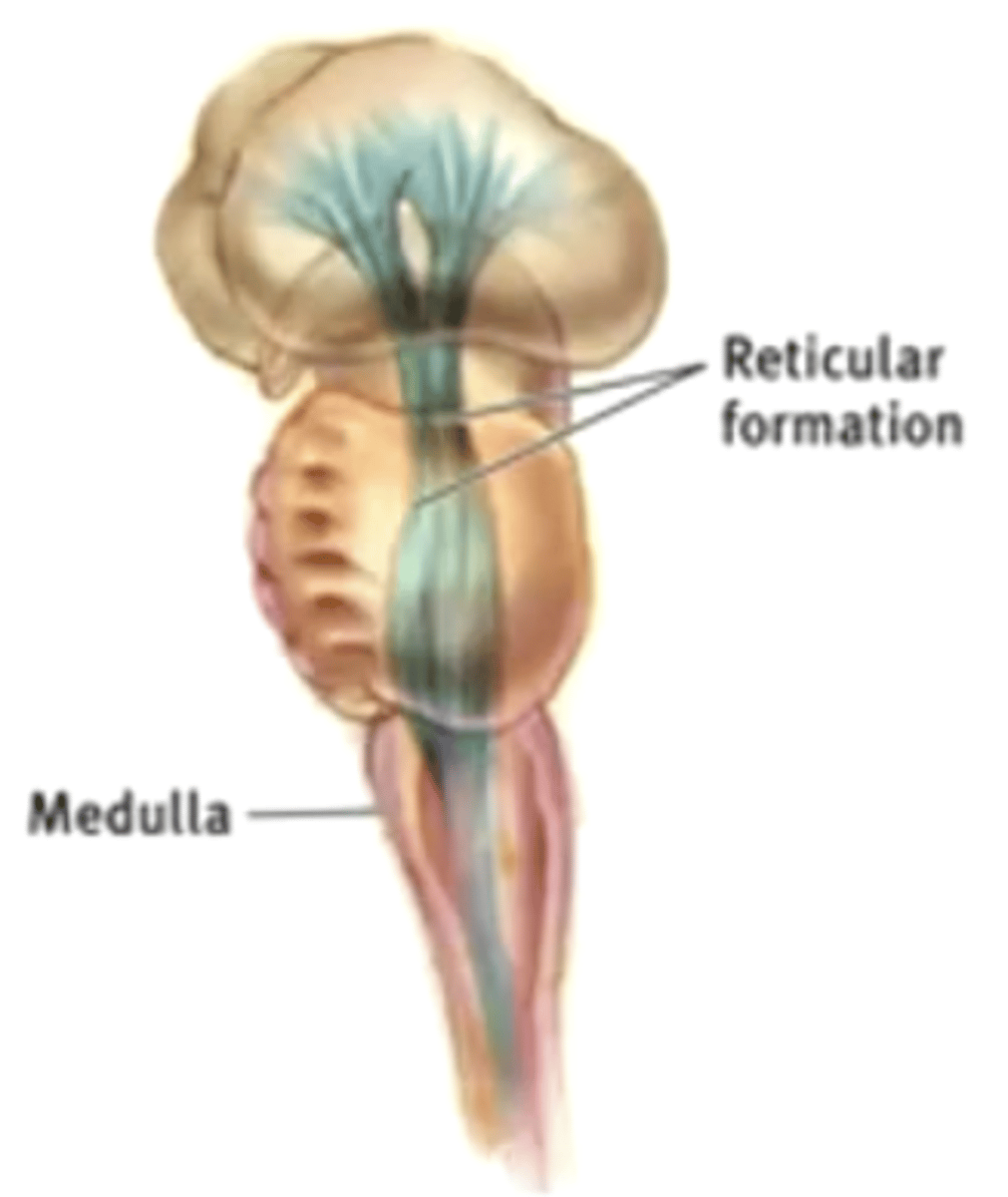
why has the reticular formation been relatively hard to study?
it does not have any distinct boundaries, therefore it is difficult to see with conventional histological methods
what is the reticular formation?
a complex network of cell bodies and axons located in the brainstem that is a major integration center for many vital brain systems to coordinate functions necessary for survival
list the functions of the reticular formation:
1. modulation of pain
2. modulation of movement
3. autonomic systems (respiration, heart rate, blood pressure)
4. emotions and motivated behaviors
5. arousal and consciousness
6. circadian rhythm and sleep cycles
what is the name for the region of the reticular formation responsible for arousal and consciousness:
reticular activating system (RAS/ARAS)
damage to this region of the reticular formation can result in a coma
describe the neuronal cell grouping in the reticular formation:
there are clusters of cholinergic and monoaminergic neuronal groups in the reticular formation
aka specific regions of the reticular formation will hold different neurotransmitters for bodily systems
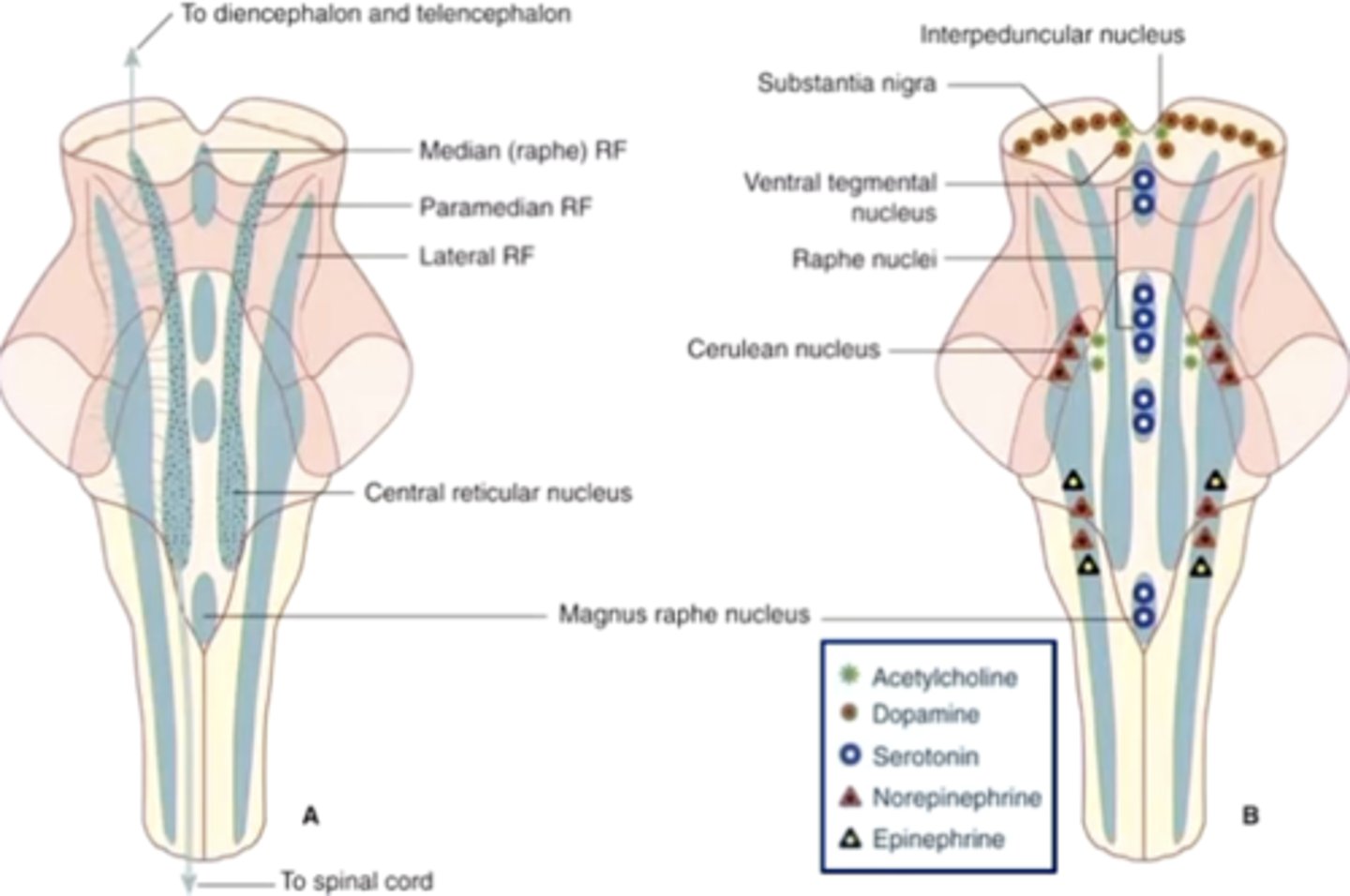
list the reticular formation nuclei that have acetylcholine:
1. pedunculopontine nucleus
2. nucleus basalis of meynert & septal nuclei
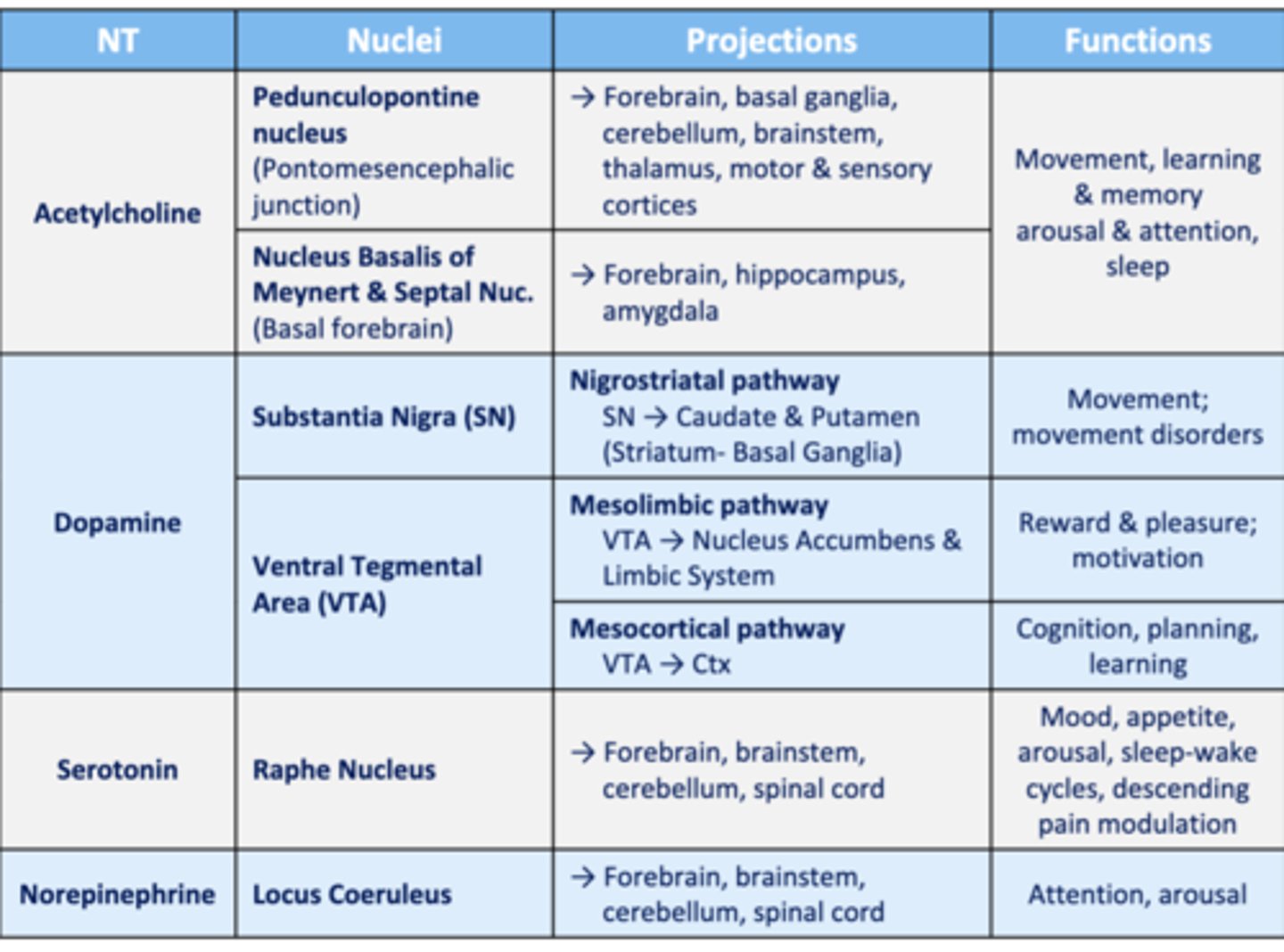
list the reticular formation nuclei that have dopamine:
1. substantia nigra
2. ventral tegmental area (VTA)
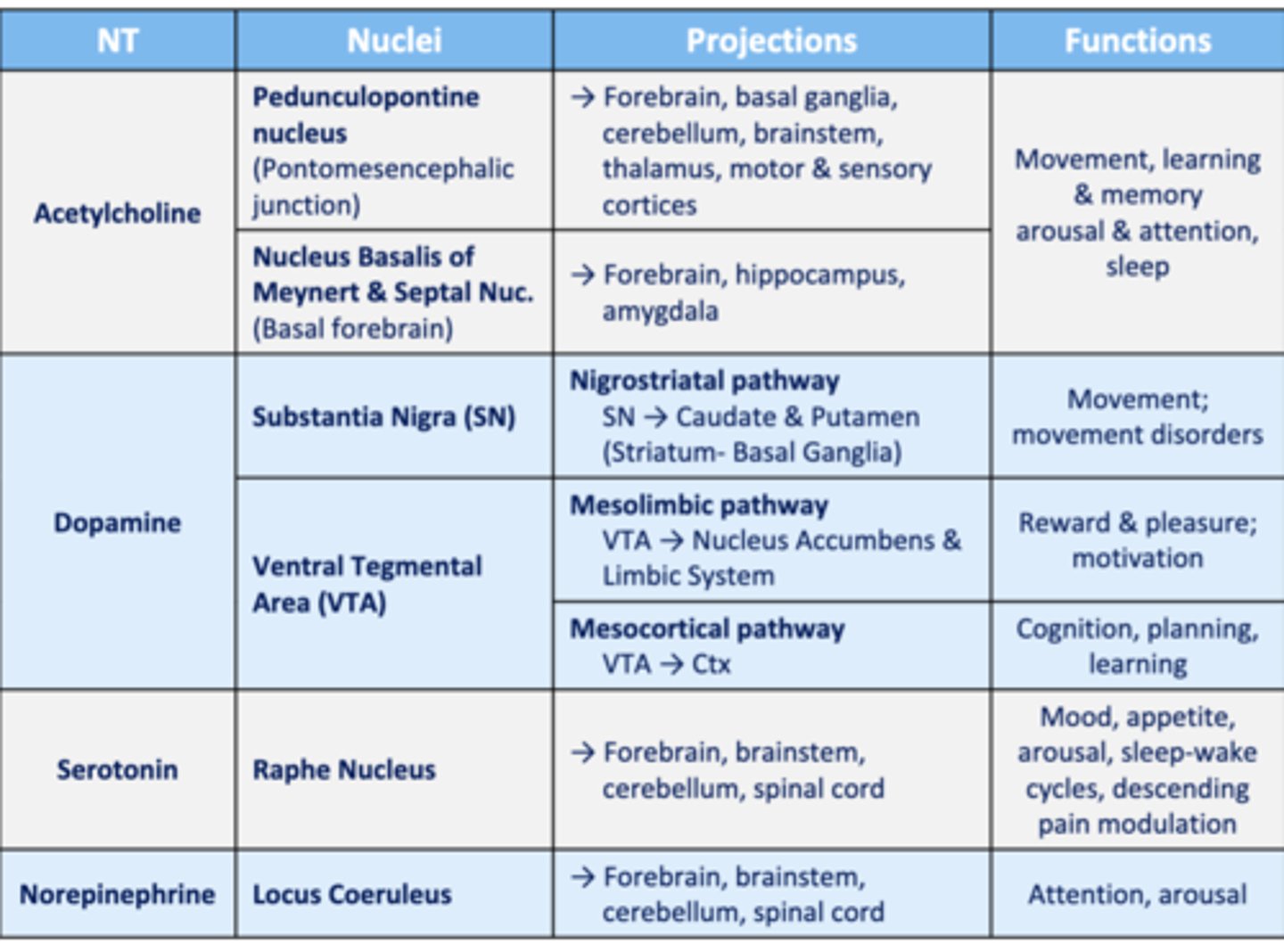
list the reticular formation nuclei that have serotonin:
raphe nucleus
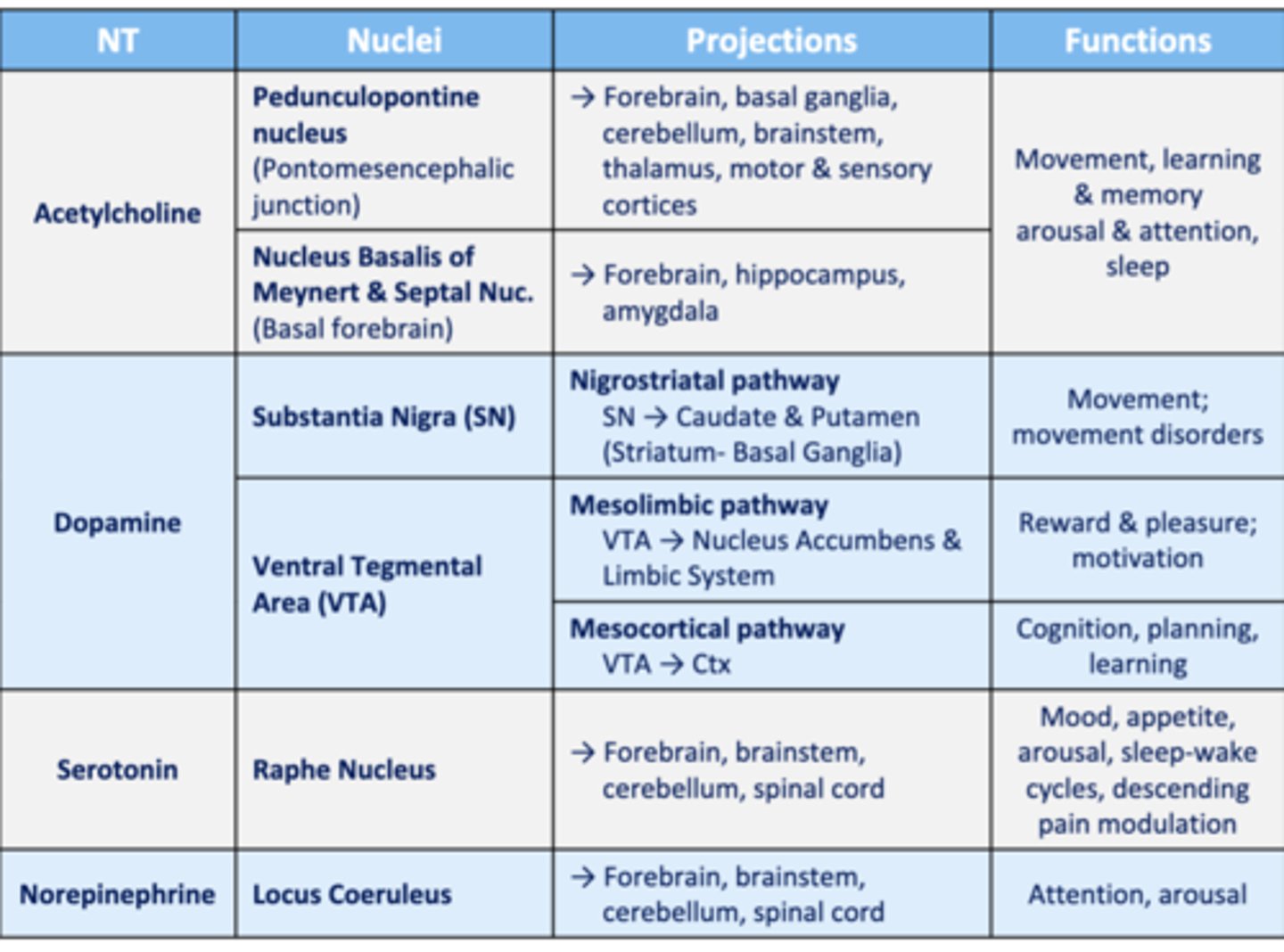
list the reticular formation nuclei that have norepinephrine:
locus coeruleus

what are the 3 pathways associated with the reticular formation and dopamine:
1. nigrostriatal pathway (movement)
2. mesolimbic pathway (reward, pleasure, motivation)
3. mesocortical pathway (cognition, planning, learning)
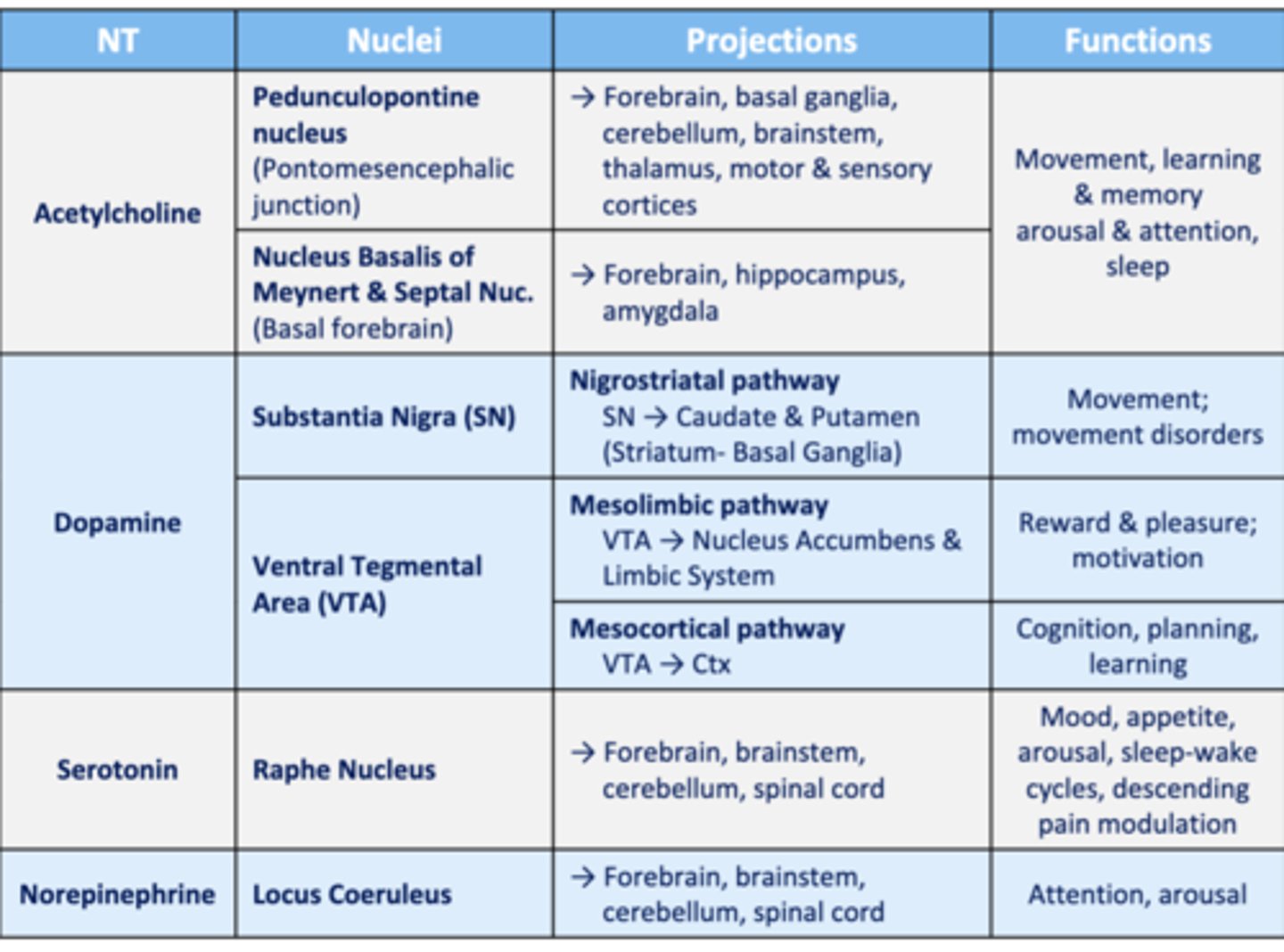
the pathway of the reticular formation --> cortex is responsible for what?
reticular activating system (RAS/ARAS) to the cortex
responsible for sleep/wake transitions, and arousal
the pathway of the reticular formation --> basal ganglia is responsible for what?
modulation of voluntary movement: substantia nigra --> caudate nucleus and putamen
nigrostriatal pathway and voluntary movement
the pathway of the reticular formation --> limbic system is responsible for what?
mood, emotion, motivated behaviors, reward and pleasure, pain unpleasantness
the pathway of the reticular formation --> spinal cord is responsible for what?
movement, pain modulation, autonomic control or breathing and cardiovascular function
reticulospinal tracts --> descending motor commands --> modulate muscles
the limbic system links (older/newer) regions to the cerebral cortex
older
what are the functions of the limbic system:
mediates:
1. emotion
2. long term memory
3. olfaction
4. behavioral modulation
5. ANS/endocrine responses
6. pain affect/unpleasantness
who first discovered the limbic system? why is this important?
James Papez (1937)
termed the limbic system the Papez circuit - this was one of the first discoveries of interconnectivity in the brain (neuroanatomically)
the structures of the limbic system are within three main regions. what are these?
1. cerebrum
2. diencephalon
3. reticular formation
what is the cingulate gyrus and its function?
part of the cerebral part of the limbic system that is responsible for enthusiasm, passion, pain unpleasantness, and avoidance
(green)
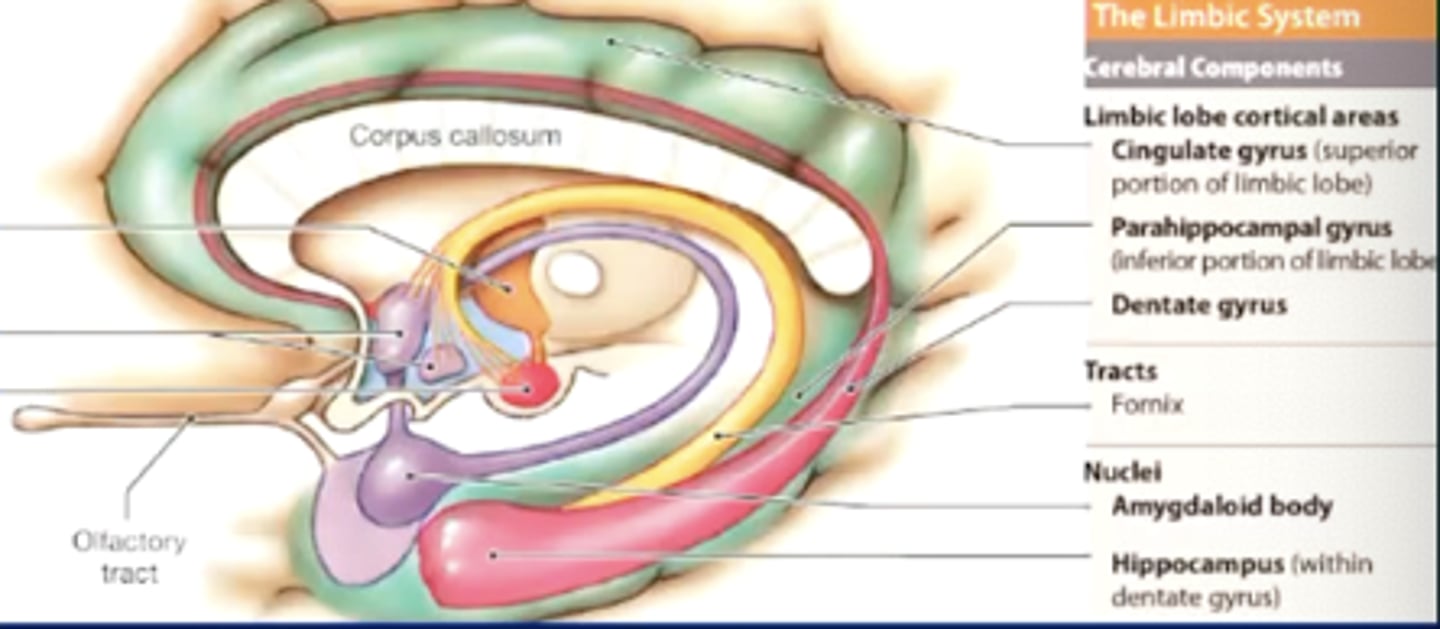
bilateral damage to the cingulate gyrus can cause what?
1. loss of initiative and behavioral inhibition
2. flattened affect (no emotion)
what is the prefrontal cortex and its function?
part of the frontal lobe that is responsible for planning, decision making, and attention
what is the parahippocampal gyrus?
part of the cerebral part (temporal lobe) of the limbic system that is responsible for long term memory (faces/places)
what is the amygdala and its function?
part of the cerebral part (temporal lobe) of the limbic system that is responsible for fear, anxiety, and aggression
bilateral damage to the amygdala can cause what?
Kluver-Bucy syndrome
what is the hippocampus and its function?
part of the cerebral part (temporal lobe) of the limbic system that is responsible for learning and memory
hippocampus is the primary location for memory
bilateral damage to the hippocampus can cause what?
1. memory loss, anterograde amnesia
2. Alzheimer's
the hippocampus is very epileptogenic. what does this mean?
can induce epilepsy/seizures
Henry Molaison (patient HM) had what part of his brain removed due to his severe epilepsy? what did this result in?
hippocampus and entorhinal cortex
his intelligence was intact, but suffered anterograde amenesia and impaired declarative memory
the (anterior/posterior) region of the thalamus is important in the limbic system
anterior - plays a role in learning and memory
it receives input from mammillary bodies in the hypothalamus
what are mammillary bodies and where are they located?
brainstem nuclei located in the hypothalamus that receive information from the hippocampus and play a role in memory
what is Korsakoff's syndrome?
alcohol delated disorder that happens from damage to the mammillary bodies in the hypothalamus
alcohol does not damage the mammillary bodies, a vitamin deficiency does the damage
the medial forebrain bundle in the hypothalamus controls what?
the mesolimbic pathway and pleasure & reward
what is Kluver-Bucy syndrome?
damage to the amygdala that results in changes in behavior (aggression/docility), hyperorality, hypersexuality, hyperphagia, and visual agnosia
can be caused by damage to the amygdala itself, HSV-1 encephalitis, or tumors
how was the reward circuitry discovered?
James Olds and Peter Milner (1954) created a self-stimulation apparatus in mice (mice would push button to smell something rewarding)
found that the limbic circuitry mediates reward
further research identified the medial forebrain bundle as the reward pathway
list the steps in the mesolimbic dopaminergic pathway:
dopaminergic projection from VTA --> nucleus accumbens --> cortex
creates pleasure/reward associated behaviors
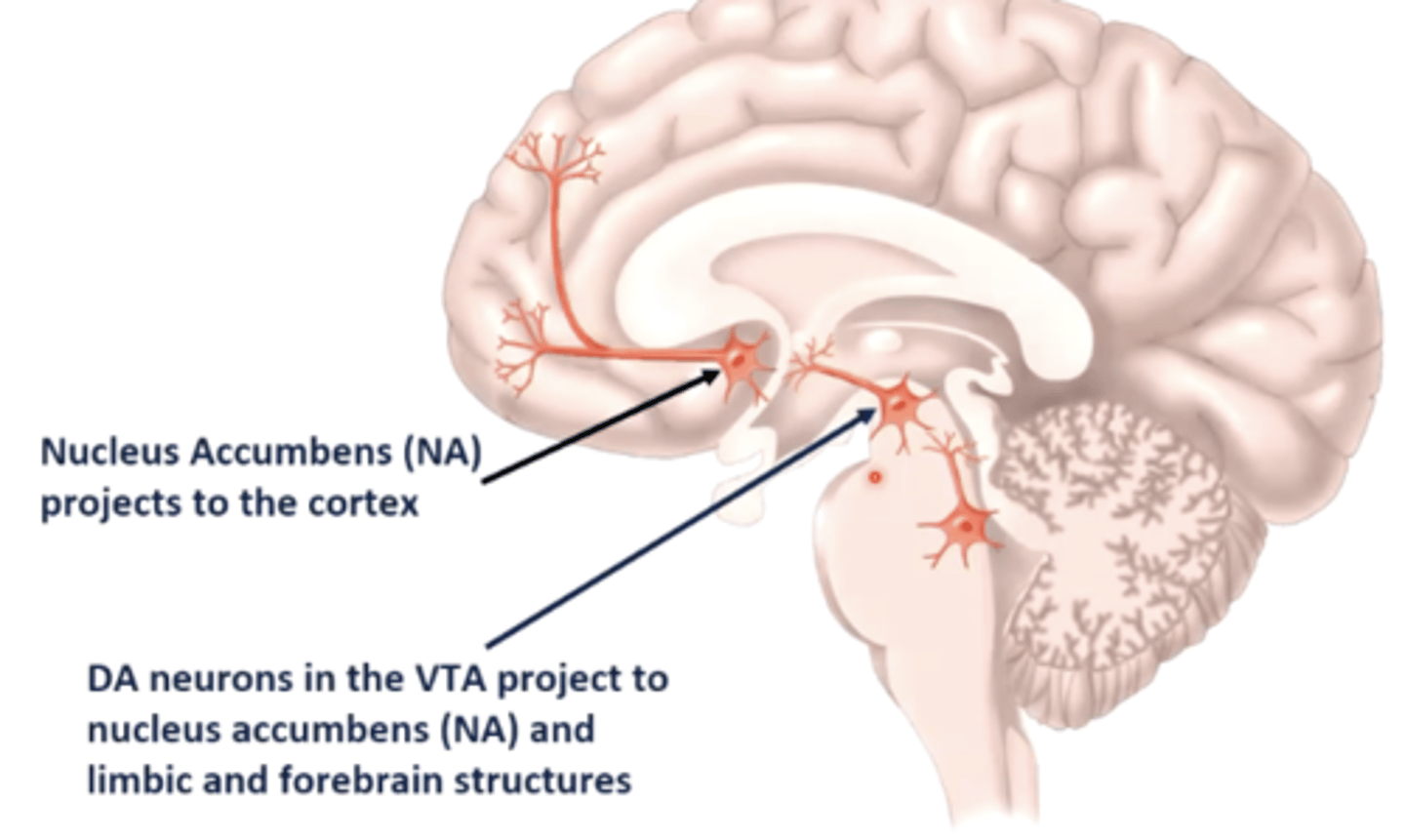
what are some reinforcing substances that trigger the mesolimbic dopaminergic pathway:
1. likable things such as laughing, good food, etc.
2. cocaine
3. amphetamines
4. opiates
5. nicotine
6. ethanol
anything that is rewarding- these substances increase release of dopamine
in the mesolimbic dopaminergic pathway, repeated use can cause the nucleus accumbens to become desensitized. why is this significant?
it can create a tolerance to certain substances - you need more of the substance (cocaine, amphetamines, etc) to produce the same pleasurable effect
what pathway in the brain is responsible for reward?
mesolimbic dopaminergic pathway